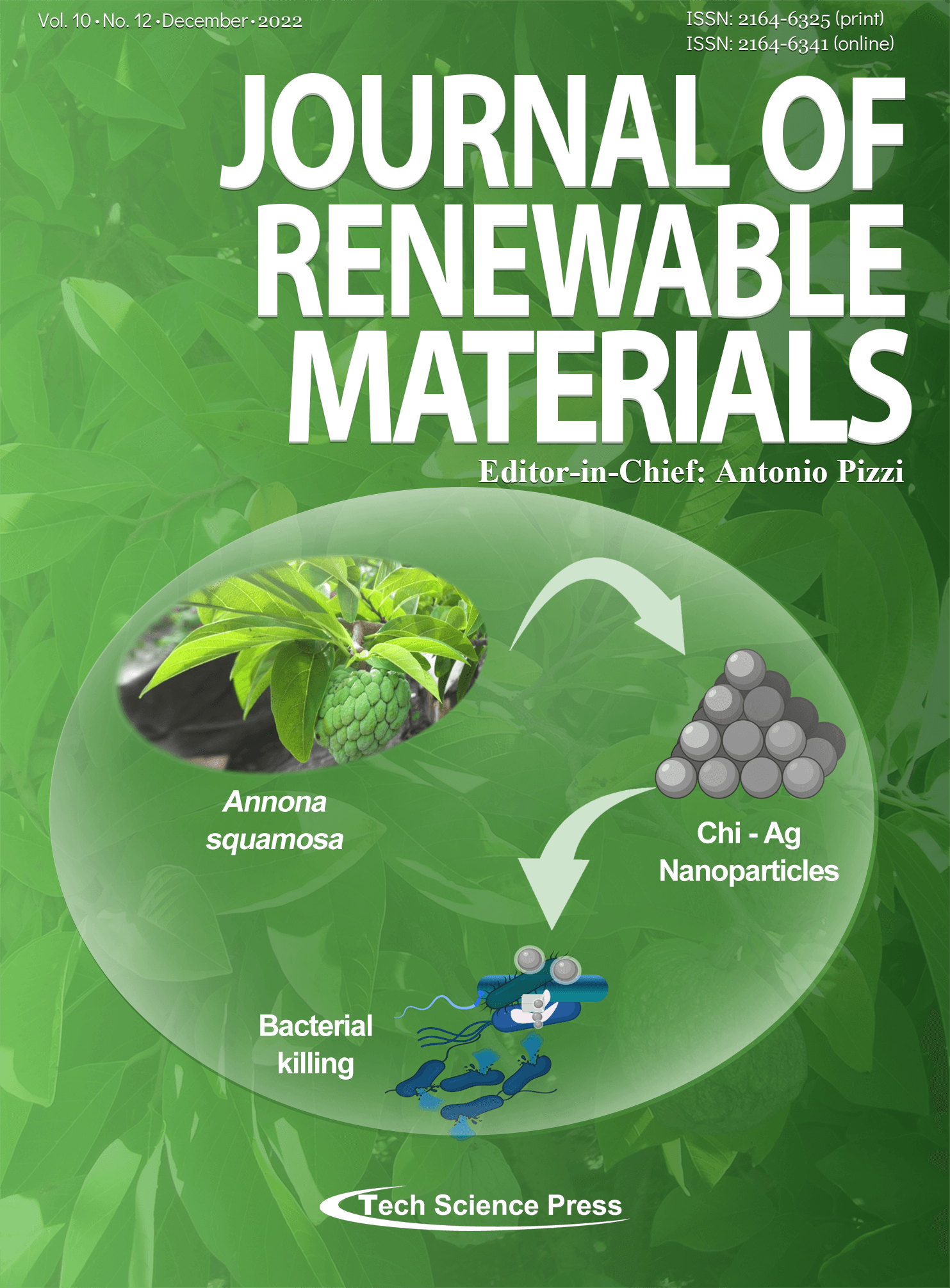Magnetic Wakame-Based Biochar/Ni Composites with Enhanced Adsorption Performance for Diesel
Hua Jing1, Shiyao Lu1, Lili Ji1,*, Shijie Li1, Baikang Zhu2, Jian Guo3, Jiaxing Sun1, Lu Cai4, Yaning Wang1
Journal of Renewable Materials, Vol.10, No.12, pp. 3147-3165, 2022, DOI:10.32604/jrm.2022.020215
- 14 July 2022
(This article belongs to the Special Issue: Biochar Based Materials for a Green Future)
Abstract In this study, the magnetic wakame biochar/Ni composites were prepared with three activating reagents of
H3PO4, ZnCl2 and KOH by one-step pyrolysis activation, characterized by BET, SEM, TEM, FI-IR, XRD, Raman,
and elemental analyzer, and their adsorption performance for diesel were also analyzed. The results showed that
wakame biochar/Ni composites had larger specific surface area, abundant porous structure, and various reactive
groups, rendering its enhancement of adsorption efficiency. The adsorption experiments indicated that the maximum adsorption capacities for diesel using WBPA 0.5, WBHZ 0.5 and WBPH 0.5 were 4.11, 8.83, and 13.47 g/g,
respectively. The Langmuir More >
